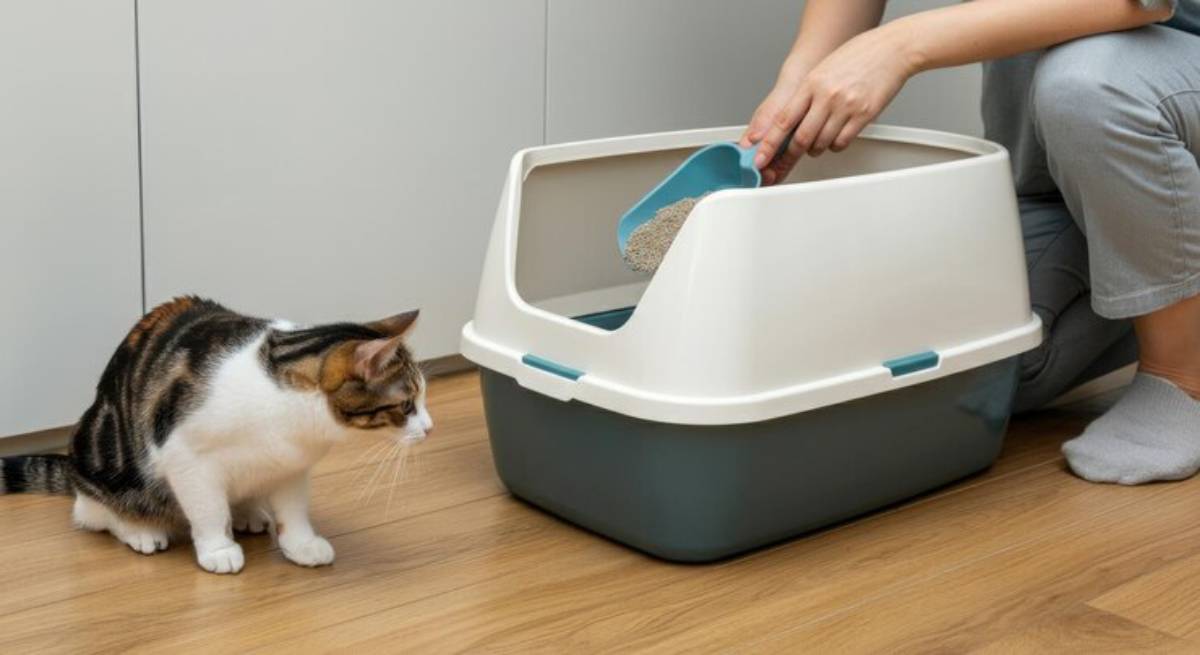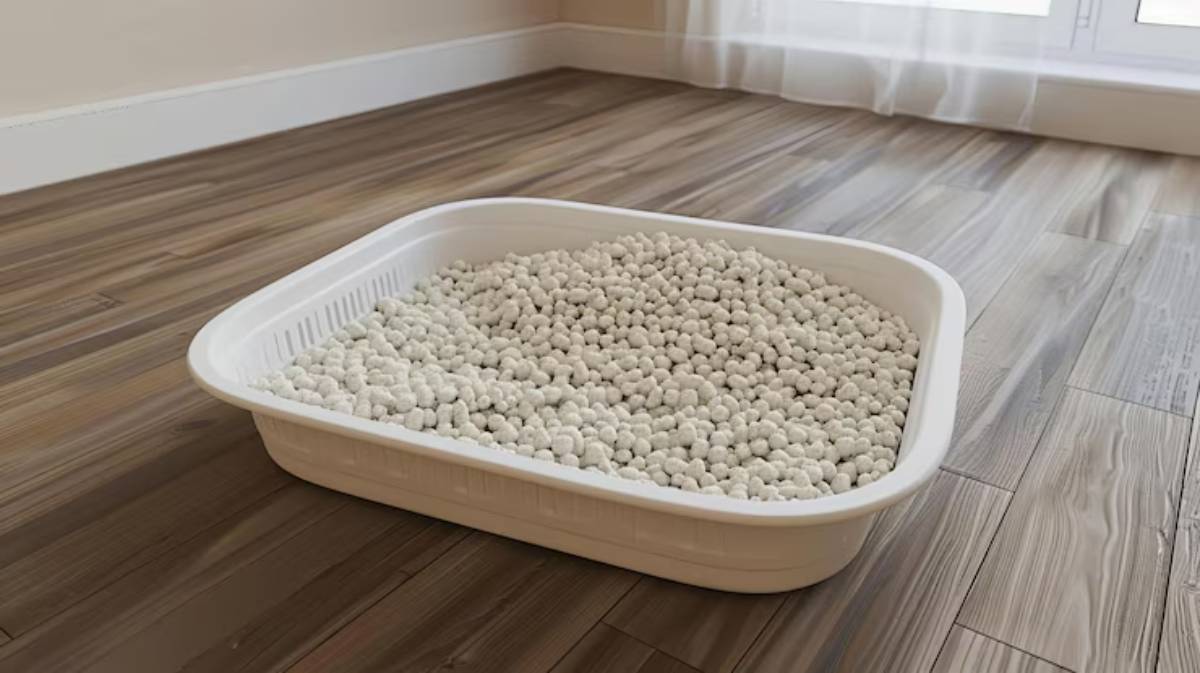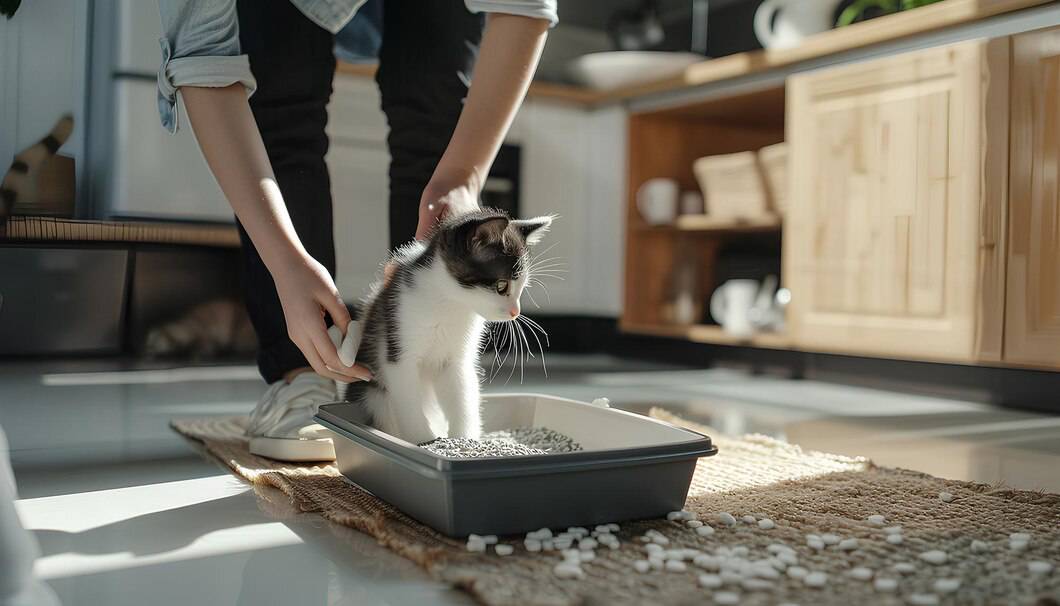
How Often Should You Clean the Litter Box?
We all love our cats—their cuddles, quirky personalities, and quiet companionship. But there’s one part of cat ownership that no one raves about: cleaning the litter box. It’s not exactly glamorous, but it’s essential.
If you’ve ever wondered how often to clean the cat litter box, you’re far from alone. Many cat parents either overdo it or wait too long, not realising that proper litter box maintenance plays a key role in their cat’s health and behaviour.
This guide dives into the nitty-gritty (yes, pun intended) of cleaning your cat’s litter box—from how often, to how, and why it matters more than you might think. Whether you’re a new cat owner or a seasoned feline fanatic, there’s something here to help you keep your cat’s toilet habits healthy and your home fresh.
Why Litter Box Hygiene Matters More Than You Think
Cats Are Clean Creatures
Cats are famously fastidious. Their grooming rituals are meticulous, and their need for a clean toilet space is no different. If the litter box gets too dirty, your cat may refuse to use it, opting for your laundry basket or that lovely rug in the hall.
A dirty litter box can lead to:
- Litter box avoidance (and messes elsewhere)
- Stress or anxiety in your cat
- Health issues like urinary tract infections
- Odour problems in your home
So, while scrubbing a tray isn’t fun, it’s a key part of caring for your cat and maintaining household harmony.
The Short Answer: How Often Should You Clean It?
Here’s the golden rule: Scoop daily, deep clean weekly.
Daily Tasks (Yes, Every Single Day)
- Scoop out clumps of urine and faeces
- Check for any unusual smells, colours, or textures (gross, but essential)
- Top up with fresh litter as needed
This daily routine keeps the tray pleasant for your cat and helps you spot early signs of health problems, like diarrhoea, blood, or increased urination.
Weekly Tasks
- Empty all litter and dispose of it responsibly
- Wash the litter box with warm water and unscented soap
- Dry thoroughly and refill with fresh litter
If you use non-clumping litter or your cat is especially sensitive, you might need to do this more than once a week.
Factors That Affect Cleaning Frequency
Not every litter box (or cat) is created equal. Let’s look at what can change the schedule.
1. Number of Cats
More cats = more mess. The rule of thumb is one litter box per cat, plus one extra.
If you have:
- 1 cat → Scoop daily, deep clean weekly
- 2 cats → Scoop 2x daily, deep clean every 5–6 days
- 3+ cats → Scoop multiple times a day, deep clean every few days
This reduces competition for space and helps avoid litter box drama (yes, that’s a thing).
2. Type of Litter

Different litter types behave differently:
- Clumping litter makes daily scooping easy and keeps the box fresher longer
- Non-clumping litter often smells sooner and needs more frequent changing
- Natural or biodegradable litter may break down faster, affecting odour control
Always read the packaging for best practices, and adjust your cleaning routine based on your observations.
3. Type of Box
Covered, open, self-cleaning. There are loads of options. But each has pros and cons.
- Covered boxes trap smells, so they need extra cleaning
- Open boxes air out better, but may spread litter more
- Self-cleaning boxes still need regular maintenance and a deep clean weekly
No matter how fancy your box, nothing replaces the human touch.
4. Your Cat’s Health & Age
Senior cats, kittens, or those with health issues may urinate more or have softer stools.
For example:
- Diabetic cats may urinate more frequently
- Cats with kidney disease drink and pee more
- Older cats may have mobility issues that affect how they use the box
In these cases, clean more often and consider using puppy pads or easy-access trays to support them.
Signs You’re Not Cleaning Enough

How do you know when you’re falling behind? Your cat—and your nose—will usually tell you.
Watch for:
- Litter box avoidance
- Lingering smells, even after scooping
- Clumps sticking to the sides or bottom
- The cat is tracking litter more than usual
- Visible residue or staining inside the box
A good clean should leave the box looking and smelling neutral, not like a perfumery, but certainly not like a barnyard.
Tips for Hassle-Free Litter Box Cleaning
Let’s be real—it’s a chore. But with the proper setup, you can make it quicker and less unpleasant.
Use Liners (If Your Cat Tolerates Them)
Some cats hate them, but liners can help with:
- Faster weekly clean-ups
- Reducing residue sticking to the tray
- Protecting plastic trays from urine damage
Use a Litter Mat
These sit under the box and catch stray litter granules. Less sweeping, less hassle.
Keep Cleaning Supplies Nearby
Create a mini station near the litter tray with:
- Litter scoop
- Disposable gloves
- Mild soap or litter-safe cleaning spray
- Spare liners or litter bags
Convenience = consistency.
Replace the Box Periodically
Even the best-kept plastic tray wears out.
Every 6–12 months, replace it to prevent:
- Embedded odours
- Scratches that harbour bacteria
- Degradation of the material
Real Talk: Why Some People Avoid Cleaning
We get it. You’re busy, it’s gross, and easy to forget—especially if your cat is still using the tray.
But here’s the truth: ignoring the tray can lead to big problems.
Quick mindset shift:
- Think of it as brushing your teeth. Not fun, but essential.
- Schedule it as part of your daily routine—after breakfast, before bed, whatever works.
- Use clumping litter that makes the job faster.
Even 2–3 minutes a day can spare you hours of cleaning later (and carpets to replace).
A Quick Anecdote: Max and the Mystery Smell
Lucy, a cat mum from Bristol, had always assumed once a week was enough. But then her usually clean and cheerful boy, Max, started going behind the curtains.
The vet found no medical issue, but Lucy had recently changed his litter to a scented one and started cleaning less frequently due to a hectic work week.
She switched to unscented litter, started scooping daily again, and Max was back in the tray within days. “I didn’t realise how picky cats could be,” she said. “Now I get it—clean tray, happy cat.”
Clean Box, Happy Cat, Happy Home
So, how often should you clean the litter box? Ideally, every day, with a proper scrub at least once a week. It might not be your favourite task, but it’s one of the most important for your cat’s health and happiness.
- Scoop daily, deep clean weekly.
- Adjust for the number of cats, litter type, and your cat’s health
- Watch for signs of discomfort or avoidance
- A little effort goes a long way toward preventing behavioural and health problems
Got a deep cleaning routine that works wonders? A litter type your cat loves? Share your tips in the comments—we’d love to hear what keeps your cat’s toilet in tip-top shape!
If you find this guide helpful, share it with a fellow cat lover or subscribe for more honest, practical pet advice.
Because at the end of the day, a clean litter box isn’t just about hygiene—it’s about respecting your cat’s needs. And that’s what genuine pet care is all about.


